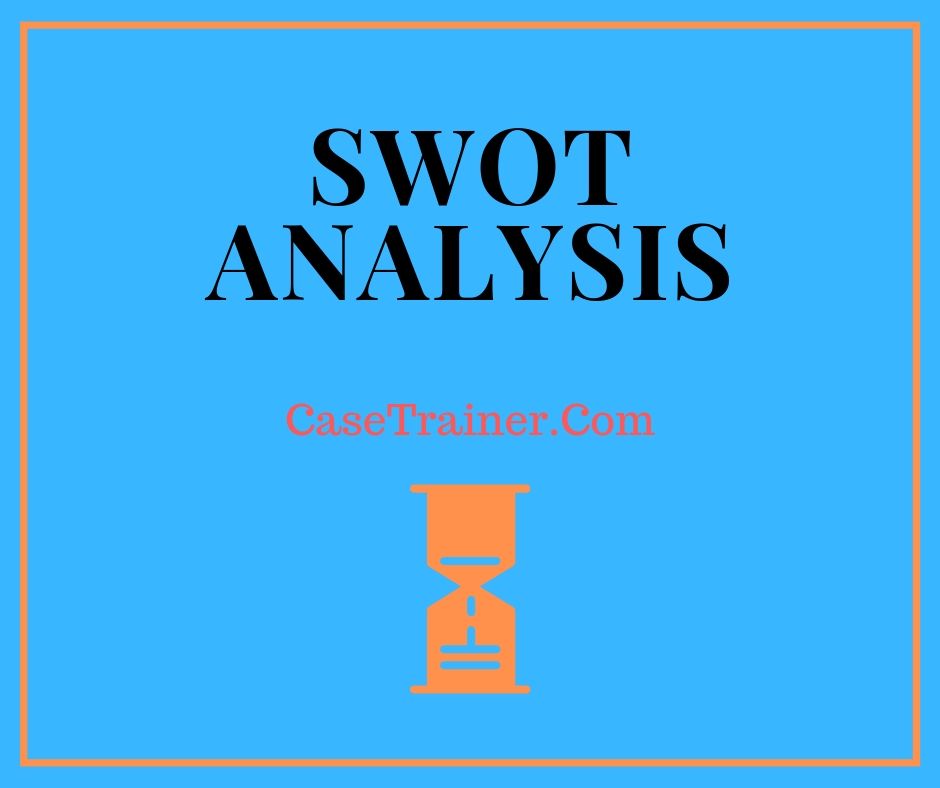Oceancove Case Analysis Case Study Solution and Analysis
Intro
Oceancove Case Analysis Case Study Help is the biggest publishing company with a greatest market share in the China's book retail market. CMP has actually ended up being a specialized details company and a large comprehensive Science and Technology publishing business through the integration of print media, audio-visual media and the network media.
Vital Concerns
Although, Oceancove Case Analysis Case Study Help has actually spent its 60 years journey smoothly, being an effective publishing home, nevertheless, the changing macro market patterns and forces bring particular challenges to the publishing industry in general and CMP in specific. These factors consist of;
• Entryway of the new publishing companies in the market.
• Decreasing growth of the publishing market.
• Market saturation.
• Intro of digital publishing methods
• Improvement of science and technology.

The transformation of the macro markets have raised numerous questions to the management at CPM that what could be the future of CMP in this circumstance? Do the long valuable experience, technical resources and the capabilities of the company could be made use of to strive for the future development unceasingly? How could the business sustain its long term competitive position in future?
Situational Analysis
Internal Analysis
SWOT Analysis
Strengths
Oceancove Case Analysis Case Study Analysis has certain strengths that can be used to reduce the risks, overcome the weak point and avail the chances. Strengths of CMP are offered as follows;
• The long term experience of Oceancove Case Analysis Case Study Help in the publishing industry i.e. 60 years enables the business to supply high quality items at a lower cost using its prior experiences.
• The technical resources and capabilities produced by its effective journey supply a competitive benefit to CMP.
• Large item portfolioof CMP assists it to diversify its threat and provide high worth to its clients.
• Strong monetary position enables the company to consider numerous development opportunities with no worry of raising fund externally.
Weak points
Along with the strengths, the company has particular weaknesses which could increase restraints for the business in executing its development program. The weak points of Oceancove Case Analysis Case Study Solution are given as follows;
• Despite of being a science and innovation publishing firm, the business still has conventional methods ofpublishing which are not compatible with the growing technological shift.
• CMP highly relies over the Chinese markets for its growth. It needs to propose specific growth plans to prevent its reliance over the Chinese markets to accomplish long term growth.

Opportunities
The growth of the publishing industry is decreasing because 2008, affecting Oceancove Case Analysis Case Study Solution as well, but the growth might be revived by availing certain chances presented in the market. The market opportunities for CMP consist of;
• The business could also present Digital Publishing by using its long term technical experience and a strong customer recognition in the market.
• CMP might think about a development program through the growth towards foreign markets in order to minimize its reliance over Chinese markets by using its large funds.
Risks
The altering macro trends in the market and increasing competitors in the publishing market has positioned certain risks to Oceancove Case Analysis Case Study Analysis consisting of;( Gurel, 2017).
• Intro of digital publishing i.e. virtual libraries could cause decreasing market share of Oceancove Case Analysis Case Study Help due to the consumer shift towards digital libraries.
• The existence of a great deal of competitors in the publishing market increase the danger for CMP to lose its competitive position in the market, as competitors can get a strong customer base by using specific techniques like aggressive promotion, quality products, etc.
• Entryway of new publishing companies in the market in addition to presence of high competitors increases the danger of losing the client base.
Monetary Analysis.

Due to absence of data, the financial ratios of CMP might not be calculated. It could be analyzed from the Appendix III that the annual total earnings of Oceancove Case Analysis Case Study Analysis throughout the period 2000-2012 are growing at a high development rate, revealing that the yearly demand of the products of CMP is growing and the company is rather efficient in bring in a large number of customers at a possible rate.
In addition to it, the second chart which reveals the annual growth in the Oceancove Case Analysis Case Study Solution overall properties, shows that the business is quite efficient in adding value to its properties through its earnings. The growth in possessions shows that the total worth of the firm is likewise increasing with increasing the total incomes. (Unknown, 2013).
Another monetary analysis of the company using the provided information could be the analysis relating to the distribution of overall profits of the company. Major part of the profits of CMP originates from the sales of its released books i.e. 64% as shown in the Case Appendix V. The company could move towards other organisation sectors with a potential development to accomplish its future advancement goal.
PESTEL Analysis
PESTEL analysis might be carried out to discover the various external forces affecting the efficiency of the company and the recent patterns in the external environment of the business. A quick PESTEL analysis of the business is given as follows; (Alanzi, 2018).
Political.
As the publishing sector could have a considerable influence on the frame of mind of individuals about the communist ideology of the government, therefore, the publishing sector is extremely supervised and assisted by the Publicity Department of the Communist Party of China. It might be stated that the general political forces impacting CMP company are high. The federal government policies relating to the publishing sector are likewise increasing with the passage of time.
Economical.
Financial forces affecting the publishing sector in basic and the Oceancove Case Analysis Case Study Help in particular includesthe prices of paper, the earnings level of consumers, the inflation rate, and the general GDP growth of the nation. All these forces combine impact the demand for the publishing market. In addition to it, the financial policies connected to the import of books affect the general service at CPM. Nevertheless, China's financial conditions are quite beneficial for CMP with high GDP growth and customer income level.
Social and Demographical.
The customer preferences are moving towards digital publishing rather than the traditional was of publishing. In this regard, CMP should focus on digital publishing to fulfill the changing customer choices.
Technological.
Technological forces impacting the CMP include the technological improvement in the reading methods etc. Enhancement of science and innovation in addition to the increase of digital publishing could lower the need for the CMP items, if particular actions would not be taken soon.
Environmental.

Environmental forces impacting Oceancove Case Analysis Case Study Solution consists of the concerns of environmental neighborhoods over the use of paper in publishing books. The paper utilized in the books while publishing is needed to be non reusable and the ink utilized while publishing needs to not be hazardous for the environment.
Legal.
Legal policies for the publishing sector at whole are high. The legal regulations regarding the publishing sector is controlled by the General Administration of Press and Publication. Publishing Ordinance 1997 needs the publishers to be approved first by the Government to be entered in the publishing market. The ordinance forbids direct participation of foreign entities and individuals in the publishing sector.
Market Analysis (Porter's 5 Forces Design).
Porter's Five Forces Model might be used to examine the appearance of the publishing industry China. A short analysis of the Porter's Five Forces is given as follows;.
Hazard of New Entrants.
Risks of new entrants in the Chinese Publishing Market is moderate. The possible growth in the market tends to attract new entrants to the publishing industry. The existence of intense competitors and the requirement of big capital tends to demotivate brand-new entrants to enter in the market.
Danger of Replacement.
Hazard of Replacement is high for the Chinese Publishing Industry. The replacement products for the released documents is the files presented in the virtual libraries on certain sites. The altering customer choices towards digital learning increase the hazard of substitution for the market.
Competitive Rivalry.
Competitive rivalry in the publishing industry is high. The existence of a great deal of customers in the Chinese Publishing Market like CIP, PTP and so on tends to produce high competitive rivalry for CMP. Together with it, new entrants are likewise entering into the marketplace increasing the competition for CMP.
Bargaining Power of Supplier.
The significant suppliers of the Oceancove Case Analysis Case Study Help include the suppliers of the paper for releasing documents. As CMP is the largest publisher in the Chinese Publishing Market, therefore the total bargaining power of supplier for CMP is low.
Bargaining Power of Purchaser.
Haggling power of purchaser in the publishing industry is high. Due to the presence of a a great deal of publishers in the Chinese market and the marketplace saturation, the purchasers needs high quality documents at competitive prices.
Competitors Analysis.
CMP runs in a highly competitive market with the existence of a great deal of rivals. Nevertheless, the business has a competitive position in the market with the greatest market share in the Chinese publishing market. Major competitors of Oceancove Case Analysis Case Study Solution include;.
• Chemical Market Press (CIP).
• Posts and telecommunication Press (PTP).
Chemical Market Press (CIP).
CIPis one of the close competitors of CMP. Established in the same period, CIP publishes similar type of books. For a big period, CIP held the largest market share, and still ranks 2nd and 3rd in various market sections, with a significant concentrate on instructional publications. CIP acts as a danger for CMP as it could wean its market share due to its long term competitive background. CIP is concentrated on digital publishing and could wean the marketplace share of Oceancove Case Analysis Case Study Solution easily in the existing market circumstance.
Posts and telecommunication Press (PTP).
Another close rival of CMP is PTP. It was also established in the very same period as CMP and CIP. It ranks 6th in the state-owned publishers in terms of service scale. It is also one of the popular players in the publishing market with a yearly overall revenues of RMB 550 million in 2010.
Alternatives
Alternative-1: Expand towards New Markets
Pros
• Minimizing dependence over the Chinese markets.
• Increasing number of Clients
• Development opportunities.
• Avoiding the effect of market saturation in the Chinese publishing industry.
Cons

• Use of potential resources in expansion.
• Threat of failure in new markets.
• Time consuming.
Alernative-2: Present Digital Publishing
Pros
• Sustaining customer base.
• Approaching new markets.
• Easy to introduce utilizing present capabilities.
• Low danger of Failure.
• Low requirement for funds.
• Increased item portfolio offers high worth to clients.
Cons
• Competition in the market by CIP, who has prior concentrate on the digital publishing.
• Shift of focus from the core organisation segments to the brand-new one can lead the business to lose demand of its items in the market.
Suggestions
As the choices are moving towards digital publishing and the business need an instant service to avoid the decreasing industry development. The business might also think about the growth program after the success of its digital publishing program.
Application
In order to present digital publishing in its item portfolio, the business needs to first collects the data related to the customer demand, the possible markets, the government regulations and the data related to the rivals provided in the market. If the initial offering shows a success, the company needs to go for the other markets. In this method the company would be able to execute its digital publishing program.
Conclusion
The growth of the publishing industry is decreasing because 2008, showing a danger to the business's long term existence, but the scenario can be controlled by thinking about an advancement plan in the future. The business might think about presenting digital publishingin its existing market to implement its advancement program at instant basis and to prevent the threat of failure for entryway in the brand-new markets.

